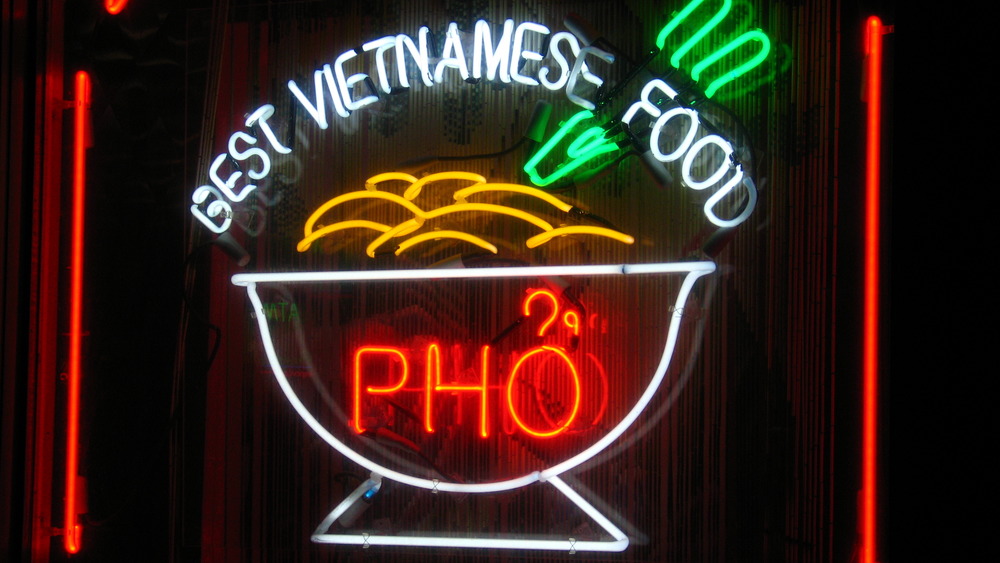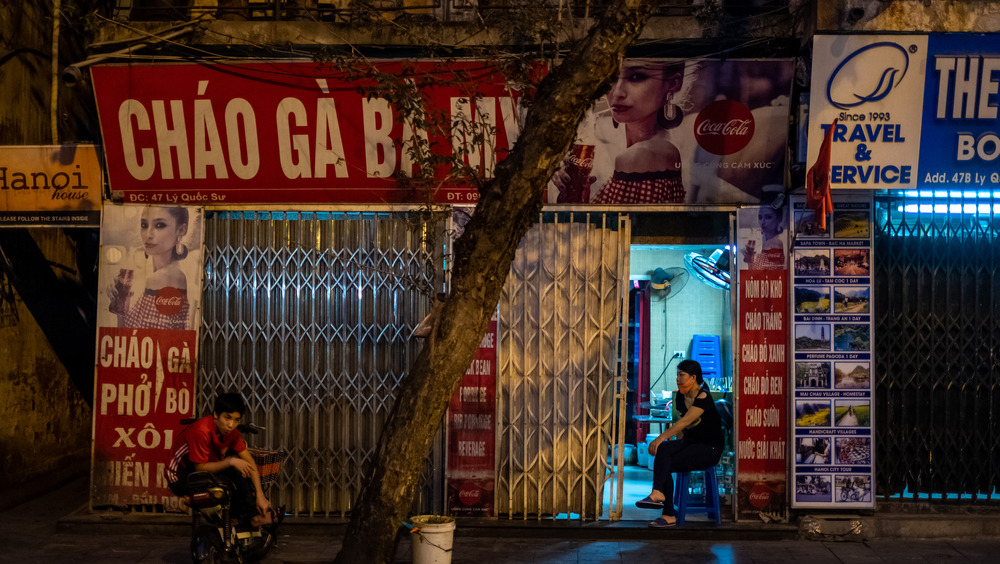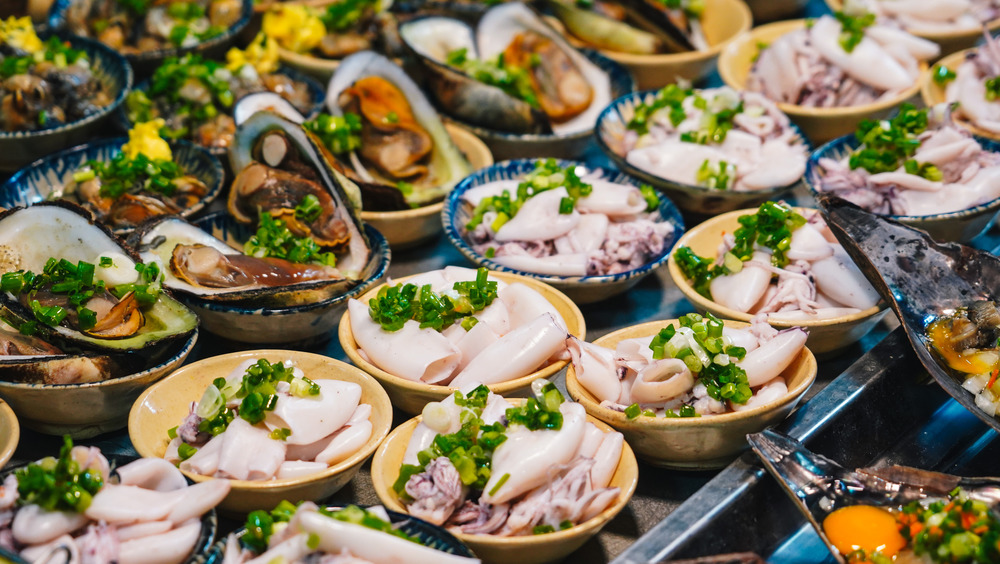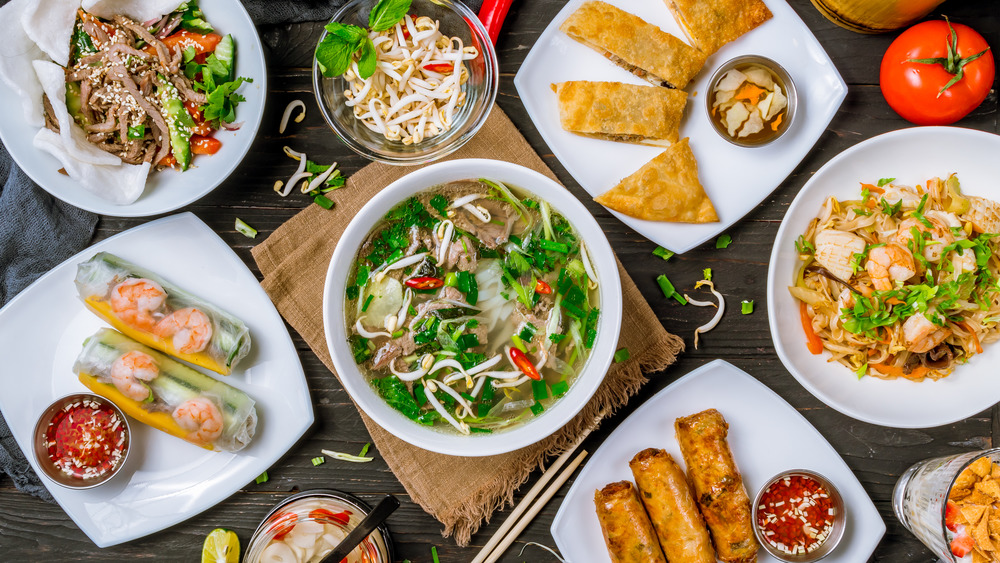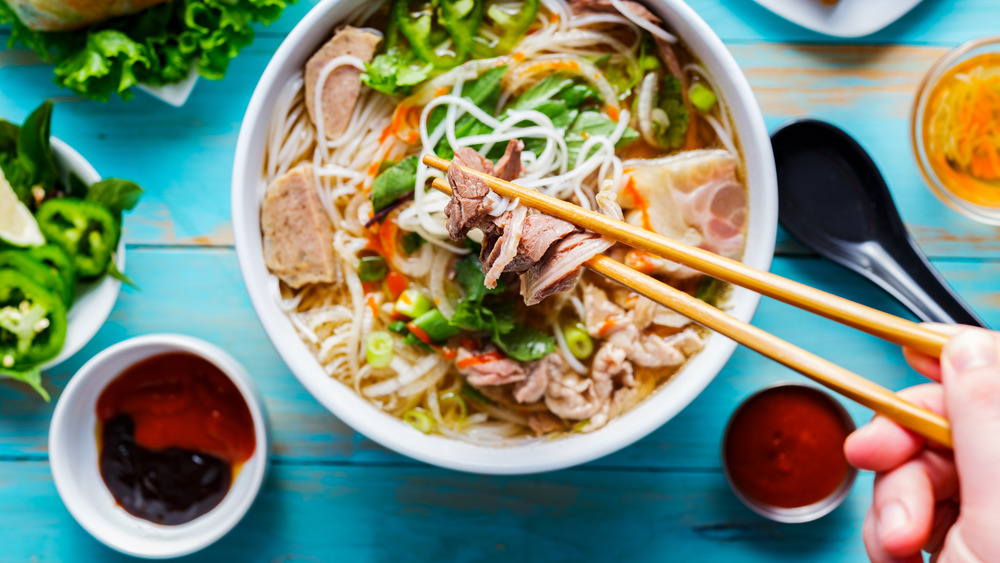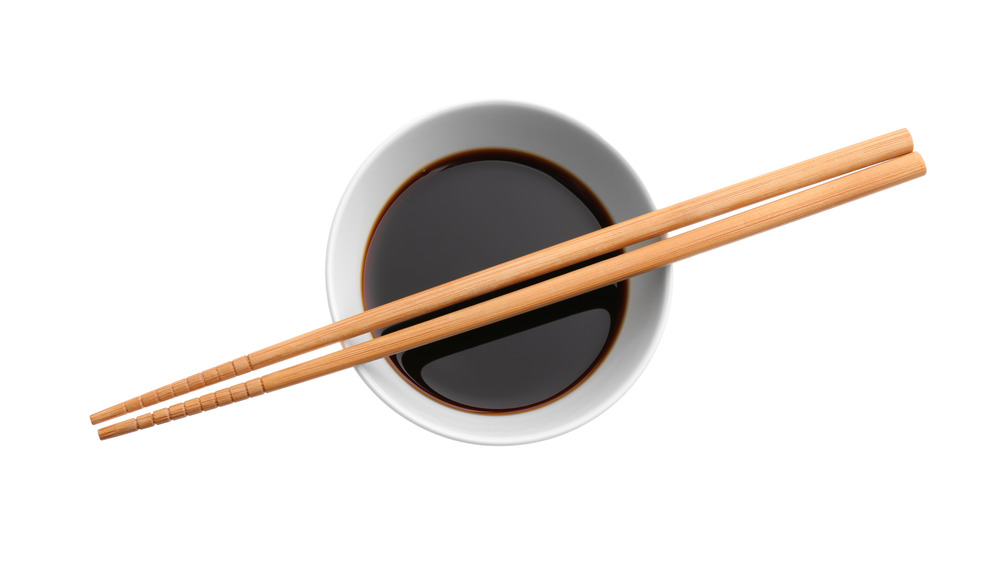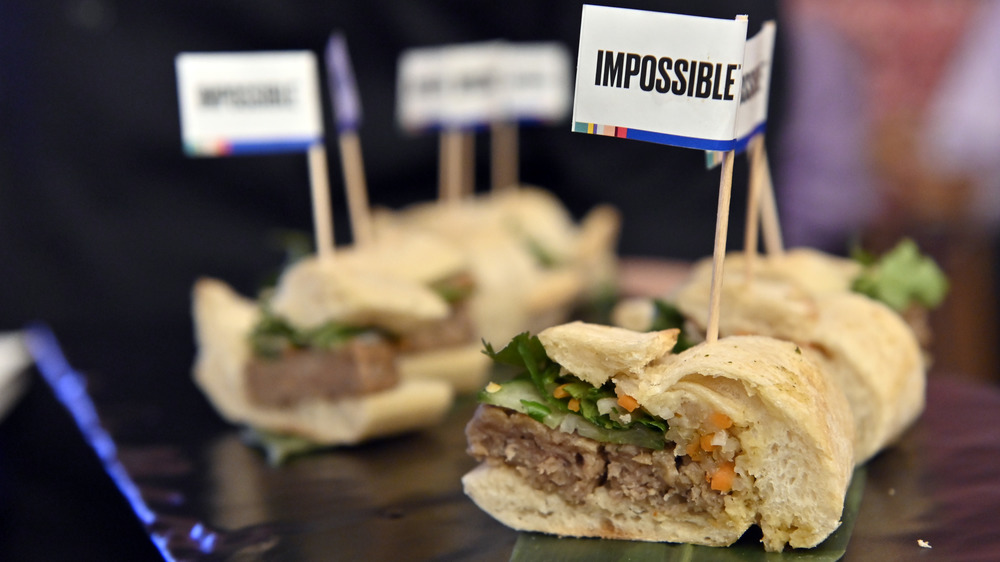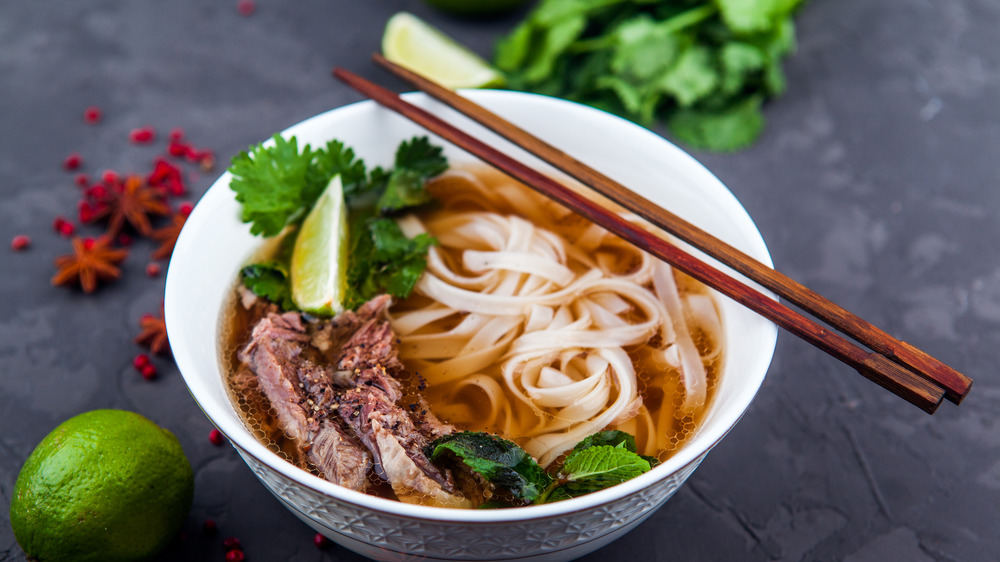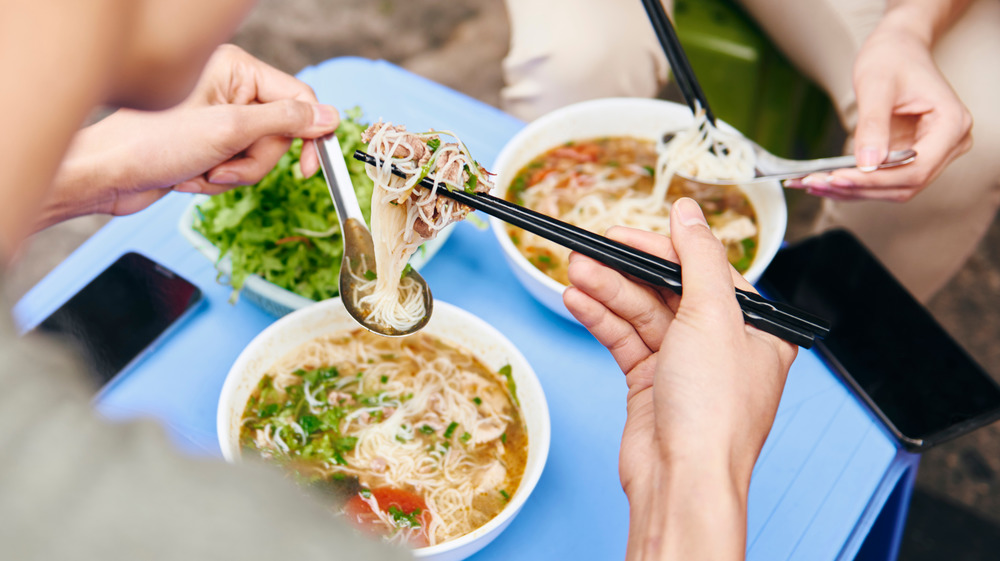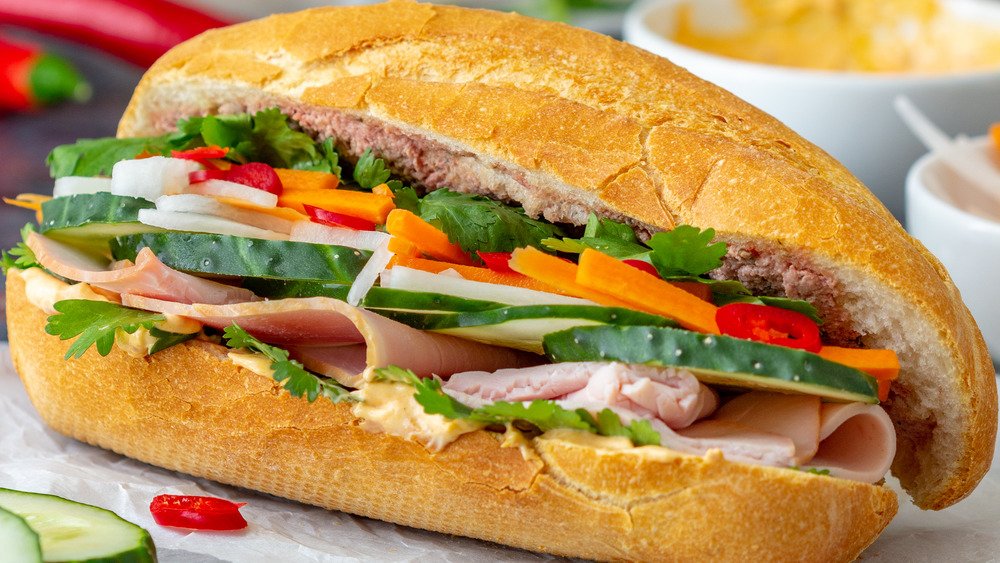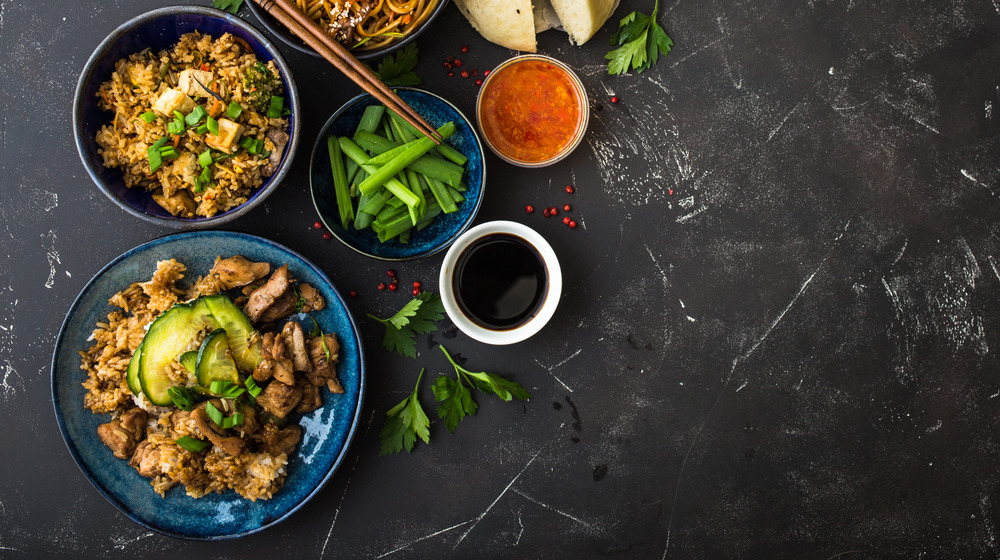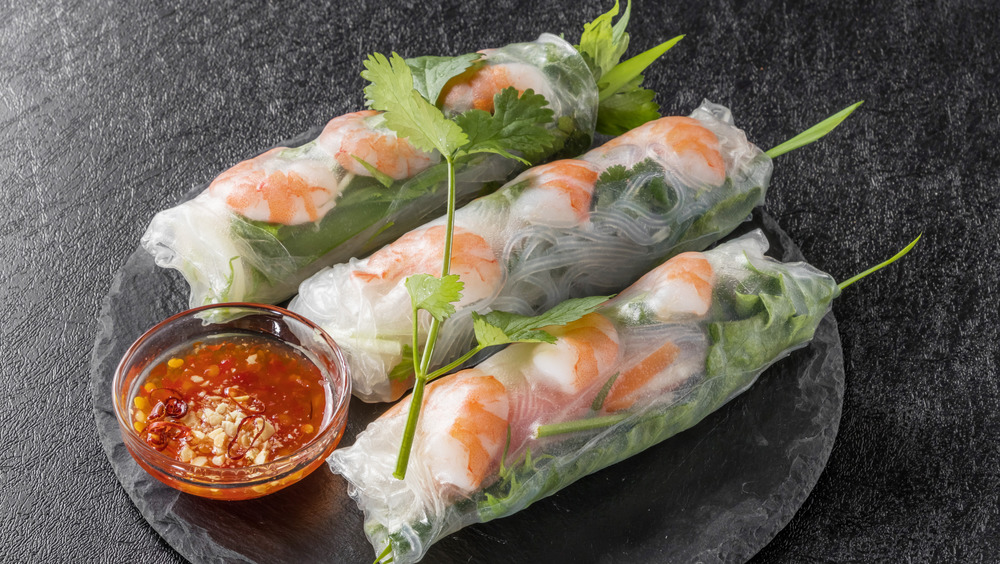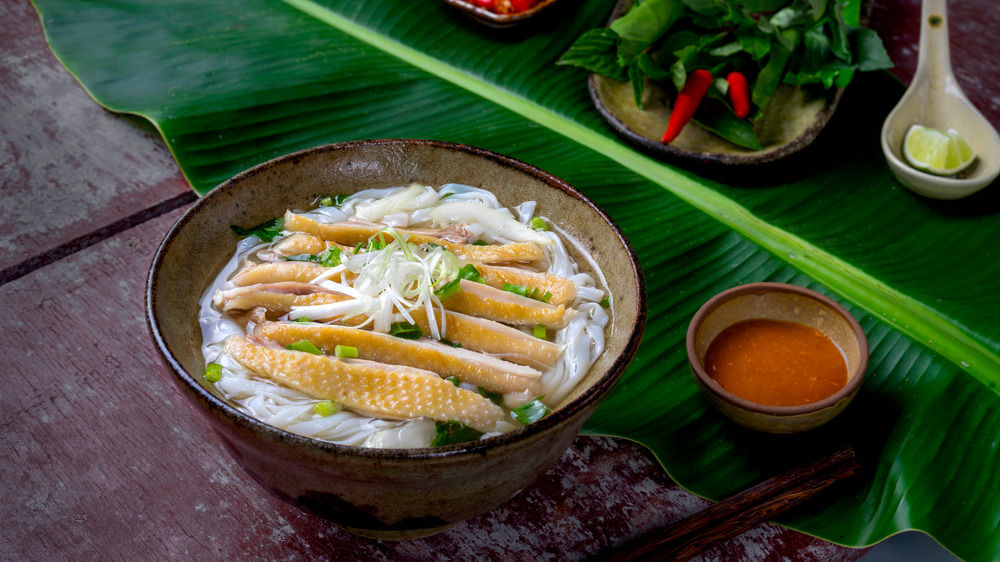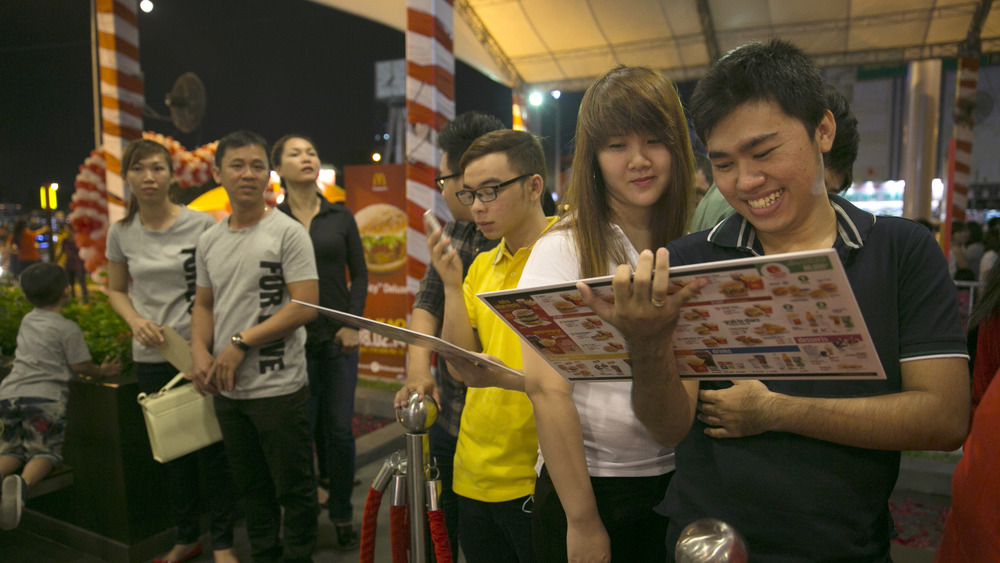Things You Should Never Do In A Vietnamese Restaurant
Whether you enjoy savory beef broths or not, "pho" is undeniably fun to say. The problem is, fun as it is to pronounce, a lot of people still get it wrong. That, folks, is the veritable tip of the iceberg when it comes to some of the mistakes people make when they walk into a Vietnamese restaurant. While diners of this Southeast Asian cuisine don't need to worry about making too many faux pas, they do need to remember that it still differs greatly from most other Asian cuisines. As its popularity spreads beyond places with large Vietnamese populations, so to do the misconceptions.
To help those new to Vietnamese food, or maybe even assist some who've tried it and somehow gotten the etiquette wrong, we spoke to Jon Nguyen, chef and owner of Tran An in Miami, who was among the first to bring Vietnamese food to south Florida. Nguyen helpfully clued us in on some mistakes that you might make when going to a Vietnamese restaurant, along with some tips on how to make the most of your dining experience.
Don't be disappointed when Vietnamese restaurant food isn't dirt cheap
Those of us who live in cities with entire neighborhoods of hole-in-the-wall pho spots might be used to grabbing a full meal at a Vietnamese restaurant for less than a McDonald's Happy Meal. But Jon Nguyen says the low prices you find in Vietnamese restaurants aren't at all indicative of the cost of ingredients or the work it takes to prepare them.
"Back in the day, when Vietnamese immigrants were beginning to own restaurants, everyone was trying to price each other out and be the cheapest cuisine around," he says. "If you think about it, the work that goes into our food is very time-consuming. It takes a lot of labor to make pho, so not every bowl has to be under 10 dollars."
He says the cuisine has gotten pigeonholed into a low price bracket. Because America has become conditioned to first-generation restaurants that all strive to be the cheapest around in order to succeed, it creates a misconception. Out of respect for both the restaurateurs and their cuisine, consider paying a little more for your pho next time around.
Don't expect Vietnamese restaurant food to be anything like Thai cuisine
Thailand and Vietnam both sit on the peninsula that makes up mainland Southeast Asia. However, they don't share a border, as the two nations are separated by Laos and Cambodia. This, however, does not stop people from lumping Thai and Vietnamese food together, says Nguyen, even though it would be like putting poutine and chocolate-based mole sauce into the came culinary category.
Thai food, he says, is super sweet and spicy, with bold, intense flavors. "When I think of Thai food, I think of an equalizer board where the treble and bass are super big and everything is on max," he says. "Vietnamese food is more like a melody. Everything is pretty chill, it has more balance."
Vietnamese food is not at all spicy. In fact, the only occasion where one might find a spicy dish in a Vietnamese restaurant is when a diner asks for it specifically. Even then, it's highly uncommon. So if you came in expecting to get blown away by spice the same way you did on your visit to a Thai restaurant, you'll be sorely disappointed.
Don't eat your Vietnamese restaurant food without adding sauces and toppings
Just because Vietnamese food doesn't kill you with spice, don't assume that it's going to be bland. The flavors of classic Vietnamese cuisine are more subtle and not as aggressive as other traditions. Part of experiencing those flavors to their full potential, however, means that you need to add sauce, vegetables, and other accoutrements to the dish. Many Vietnamese restaurants already have these extras ready right on the table in front of you. Don't be shy about picking them up and making each dish your own.
"The Vietnamese [...] spend three or four minutes doctoring their dishes with the herbs, chiles, bean sprouts, lime juice and other accoutrements on the plate of 'table salad,'" says OC Weekly. The best thing about this cuisine is that, perhaps more than any other, it gives you a chance to customize your food at the table. Eating whatever the waiter brings you without any additions of your own means that you're kind of missing the point.
Don't drown your pho in sauces
Remember when Jon Nguyen told us Vietnamese food is a delicate melody that's meant to be enjoyed for its subtlety? As another example, you wouldn't want to go in and start revving an electric guitar right over a perfectly balanced piece of music, right? But that's effectively what you're doing when you dump half a bottle of Sriracha into your bowl of pho. Also, if the chef saw you doing this, he or she might even cry. Because they put a lot of work into balancing the flavors, your sauce dump is effectively saying, "I don't care about your hard work. Give me the rooster!"
"I like to taste the actual broth itself, there's so much love and flavor that goes in," says Nguyen. "There's cinnamon, star anise, cloves and aromatics, and meat bone. And once you start adding hoisin or that sweet and salty Sriracha, you lose all that."
OC Weekly adds that fish sauce should also not be added to pho broth, as it will completely overwhelm the dish's delicate flavor, not to mention the hard work of the chef.
Don't ask for soy sauce at a Vietnamese restaurant
Along with expecting Vietnamese food to be spicy, another consequence of lumping Asian cuisines together is the universal expectation of soy sauce. While it may be a classic condiment in Japanese and Chinese restaurants, it's barely used at all in Vietnamese cuisine. Jon Nguyen says that it's used in maybe five percent of all Vietnamese dishes, so asking for it may come off as a little tone-deaf at best.
"Don't add soy sauce to anything," he says. "I think growing up in my house, my mom never bought it. So when people come into a Vietnamese restaurant saying, 'Hey, can I add soy sauce to my broth or rice?' that's a big no-no in Vietnamese cuisine."
So how does Vietnamese food achieve the salty, tangy flavor of other Asian foods without soy sauce? Fish sauce, also known as nuoc mam. This is a tabletop staple that, according to the Houston Press, is made with fermented fish and then sometimes "jazzed up" with lime juice, flavorful chiles, sugar, and other ingredients to create new sauces and additional flavors.
Don't look for vegan options at most Vietnamese restaurants
Nowadays, one might confidently stroll into a Texas barbecue joint and ask for vegan brisket (at least in urban centers like Austin, anyway), Vietnamese cuisine is not nearly as accommodating to those who've eliminated animal products from their diet. This is because the cuisine's most integral ingredient is fish sauce, which, as the name suggests, is made of fish. In some cuisines, one might simply able to ask for a dish without fish sauce. However, with Vietnamese food, as with some other restaurants, ordering as a vegetarian is pretty much impossible.
"Understand that when you go into a Vietnamese restaurant, 99% of what they're cooking there is doused or marinated in something that has fish sauce," Nguyen says. "Every meat is marinated in it, every sauce, the fish sauce is in everything."
That's not to say you'd be completely out of line to ask for vegetarian or vegan options. Nguyen says there are plenty of vegetarians in Vietnam, and it's not at all a faux pas to inquire if a restaurant has dishes that fit your dietary restrictions. But you'll have to ask for it, just to be sure. Moreover, don't assume that the answer will always be yes.
Don't worry about gluten in most Vietnamese restaurants
On the other end of the specialty diet spectrum, Vietnamese food is incredibly friendly to those who've eliminated gluten from their diet. Because fish sauce is a near-universal seasoning in Vietnamese restaurants, as compared to gluten-packed soy sauce, anyone avoiding gluten is safe there. Furthermore, those seeking gluten-free options have a world of choices in Vietnamese restaurants, thanks to the many gluten-free noodles, broths, and other staples of the cuisine. So, there's no need to ask your waiter about the gluten content of everything on the menu.
"Vietnamese cuisine by nature is gluten-free," says Nguyen. "We don't use soy sauce in anything. Noodles are rice-based [and there is] no soy sauce in our broths. People should just have faith in what the actual cuisine is."
The exception, of course, is the banh mi sandwich, which is served on French bread. Though you can find Vietnamese restaurants that have gluten-free bread, it's not necessarily the norm. Nguyen adds that anyone who has celiac or a serious allergy to nuts should always let their server know ahead of time. But those who are mildly intolerant or just like to avoid gluten are going to be fine.
Don't ask for a fork at a Vietnamese restaurant
There aren't many mistakes one can make in Vietnamese cuisine, says Nguyen. But if there is one serious don't that will leave you looking totally out of place, it's eating with a fork. "You will never find forks in truly Vietnamese restaurants," he says. "You don't eat noodles with a fork. You don't eat rice with a fork."
So, what is a clumsy American to do when faced with a big bowl of pho? Nguyen says spoons are completely acceptable, even if it does cause you to slurp your noodles at an uncomfortably high volume. Chopsticks are also an acceptable alternative. Pretty much every Vietnamese restaurant will have these utensils on hand. Or, you can just go old school and eat with your hands, as much of the dishes common to the cuisine are meant to be eaten that way, says Nguyen. Just make sure you've washed your hands before diving in, regardless of whether or not you're using utensils.
Don't send a banh mi back because it's cold
The abundance of banh mi fusion in America, where the traditional Vietnamese deli sandwich is filled with grilled meat and sometimes served on toasted bread, has given us all a set of faulty expectations, says Nguyen. The traditional banh mi is a cold cut sandwich made with homemade deli meats and some veggies put onto a French baguette. It's not completely unlike an Italian sub, though you'll notice some significant differences between the two classic sandwiches.
"Even to this day, you get one in Vietnam, they're sold in carts, out on the streets," says Nguyen. "There's no heating element, so everything you get is either room temperature or cold."
He adds that the banh mi most Americans imagine – a grilled pork sandwich on hot bread – is an "elevated" form of the classic banh mi that was created by Vietnamese who came to America. Definitely don't send back a cold sandwich, as that sort of move shows a serious lack of education in Vietnamese cuisine.
Don't assume fish sauce will make everything fishy
Fish can be an overpowering flavor, to be sure. Those that are averse to seafood smells and tastes may have been scared away from Vietnamese food when they read that the vast majority of it incorporates nuoc mam, or fermented fish sauce. But Jon Nguyen says the name should not dissuade anyone. Just because the sauce is made with fermented fish and spices doesn't mean that it's going to make everything taste like brine.
"I think a lot of people don't even know we put fish sauce in things," he says. "They think it's gonna be fishy or stinky or have a weird taste or smell. But that's certainly not the case."
The Houston Press certainly agrees, saying fish sauce offers a "complex flavor that's salty, sour, spicy and sweet" without overtly tastin like fish. OC Weekly is slightly less complimentary, describing the cruets of them you find on Vietnamese restaurant tables as "fragrant" and perhaps a bit of an acquired taste for some newbie diners.
Don't confuse Vietnamese spring rolls with egg rolls
Do you know the difference between the metal coils in your mattress and a chicken ovum commonly used in omelets? Yes? Well, then, if you can master that difference it shouldn't be too tough for you to discern the difference between a spring roll and an egg roll. Yet, somehow, a few uninformed diners tend to get the difference between these two rolls muddled.
Egg rolls are traditionally found in Chinese cuisine, not Vietnamese. They get the name because the thick flour wrappers containing the fillings are dipped in egg to give them extra crispiness, according to Chef One. They are also deep-fried, which gives them their trademark bubbles. Egg rolls are typically filled with meat and vegetables and almost never appear on Vietnamese menus.
Spring rolls, which frequently appear on Vietnamese restaurant menus, are wrapped in thin rice paper. They are usually filled only with fresh vegetables or fish. Spring rolls can be baked, fried, or served raw. For some diners, this is good news. This preparation method means that spring rolls are far more vegan-friendly than egg rolls.
Don't assume every Vietnamese restaurant has pho
Judging by the signs outside Vietnamese restaurants around the country, you might assume that every Vietnamese restaurant has pho on the menu. However, this would be a little like assuming every Italian restaurant has pizza, as according to OC Weekly the food varies greatly from region to region. And the restaurant you walk into may well not serve food from somewhere that has pho.
Central Vietnamese cuisine, for example, specializes in pounded rice dishes called banh beo. Those restaurants won't specialize in the beef noodle soup you so crave. If you absolutely must have pho, call ahead or do some careful internet searching first to make sure that the dish is actually on their menu. If not, consider this a chance to expand your culinary horizons and try a new and different dish that will help you truly appreciate the wide variety of Vietnamese food out there.
Don't pronounce Vietnamese restaurant dishes incorrectly
If you've been reading this entire article and pronouncing the word "pho" like "foe," unfortunately, you've been pronouncing it wrong. It's pronounced like "fuh," and leads to highly creative restaurant naming across the nation and clever headlines. But pho is far from the only dish that's tough to pronounce on Vietnamese menus. While it would probably take a full immersion to learn them all, the Houston Press outlines some of the most common ones to know like pho, of course, and ca phe sua da, a delicious iced coffee served with sweetened condensed milk.
In addition to pho, you should know that bánh mì are pronounced "bahn-MEE." Bun, the most common noodles you'll find in Vietnamese restaurants, are pronounced "boon." Fish sauce is listed as nước mắm, and pronounced "nook mom." Spring rolls, which you learned are very different than egg rolls, are called gỏi cuốn and pronounced "goy coo-un." The pronunciation isn't exactly straightforward, so you'll surely be forgiven for not nailing them all the first time. But the ones listed above should be a pretty good start.
Don't go to a Vietnamese restaurant with a massive menu
There's a reason there are no Cheesecake Factories in Ho Chi Minh City or, really, anywhere in Vietnam. It's not because Vietnamese people are nationally averse to burritos the size of your head. It's because the best Vietnamese restaurants, according to James Beard Award-winning chef and author Andrea Nguyen, keep their menus streamlined.
In a July 2020 interview with Chowhound, Nguyen suggested looking for a place with a small menu if you're unsure of where to go when you're next craving some truly delicious Vietnamese food. "Look for a focused, relatively tight menu," she said. "Any restaurant with a large menu that's more than two pages is often over-ambitious." By her measurement, this would make the Cheesecake Factory and its massive menu an unnecessarily Everest-like standard of restaurants. Nguyen also advises indecisive diners to ask for the restaurant's signature dish and order that.
